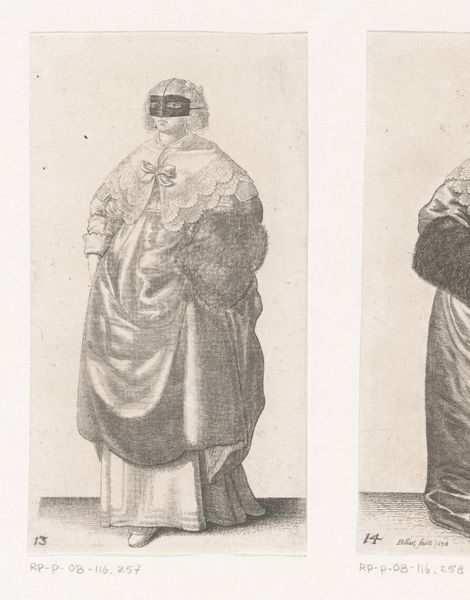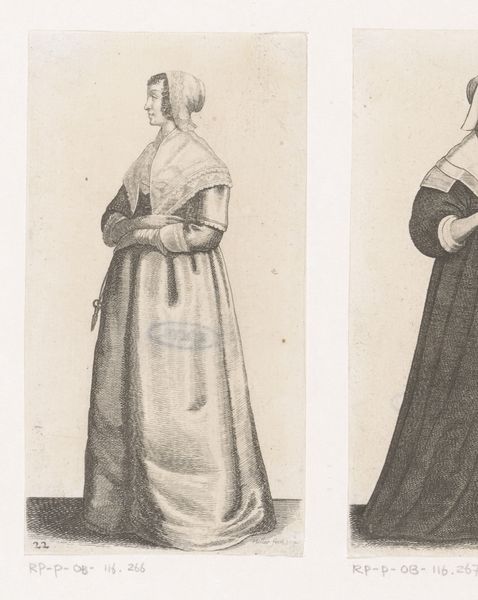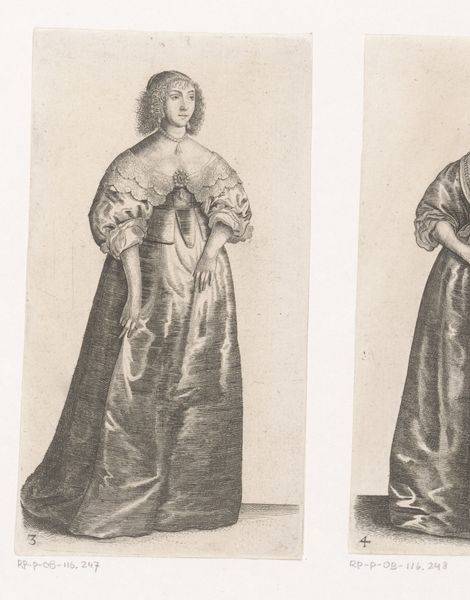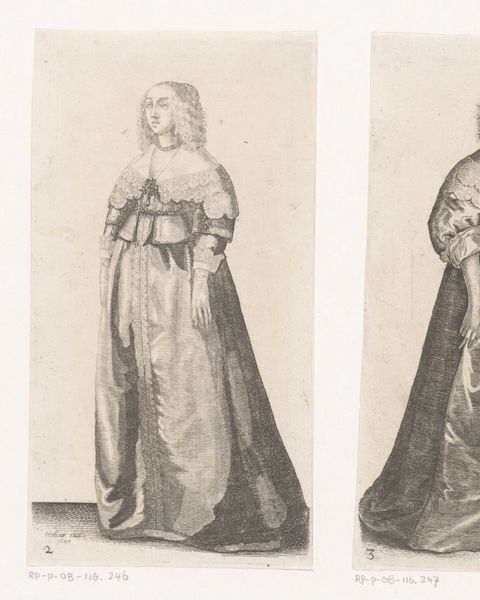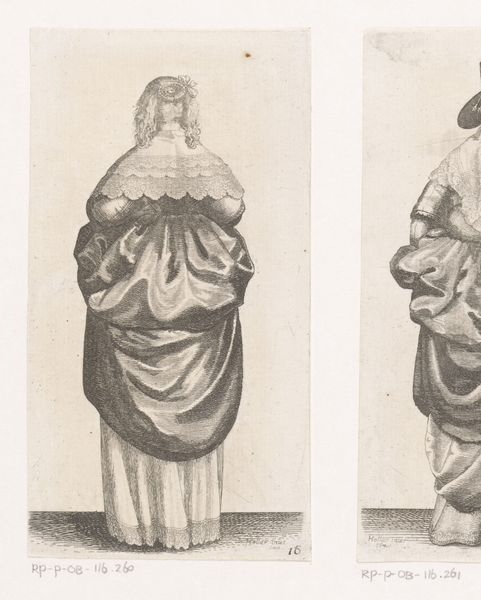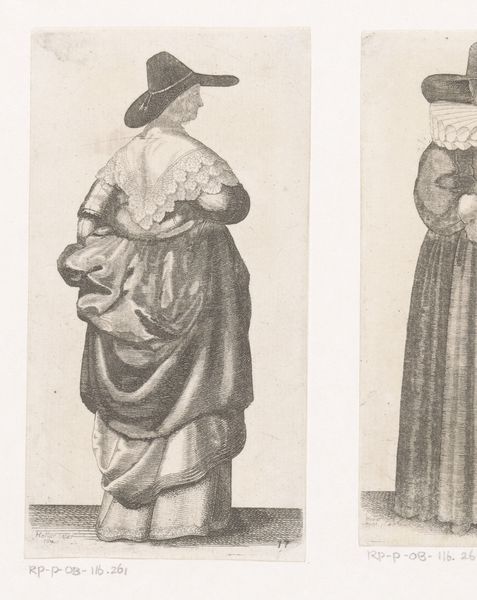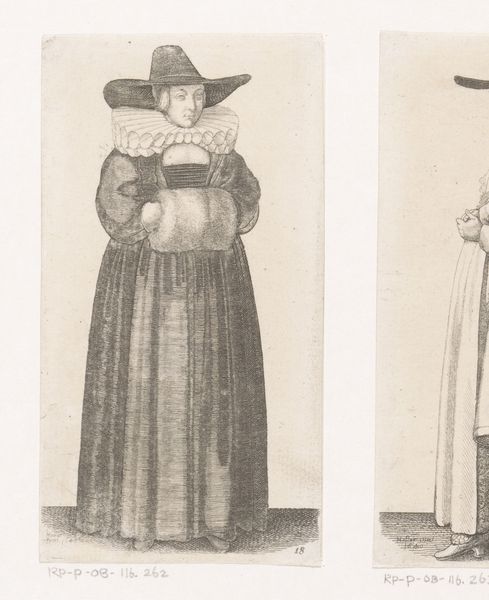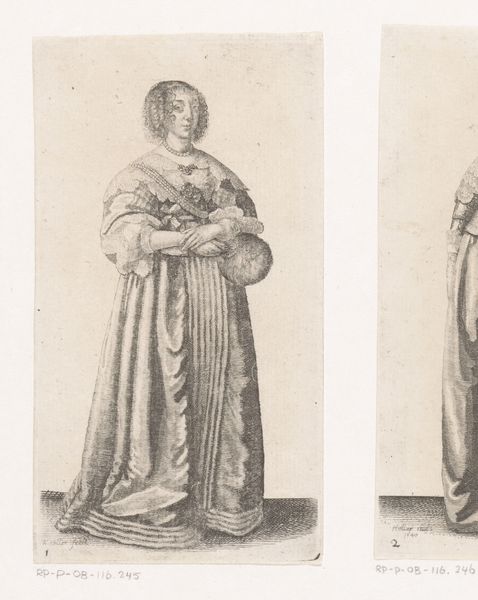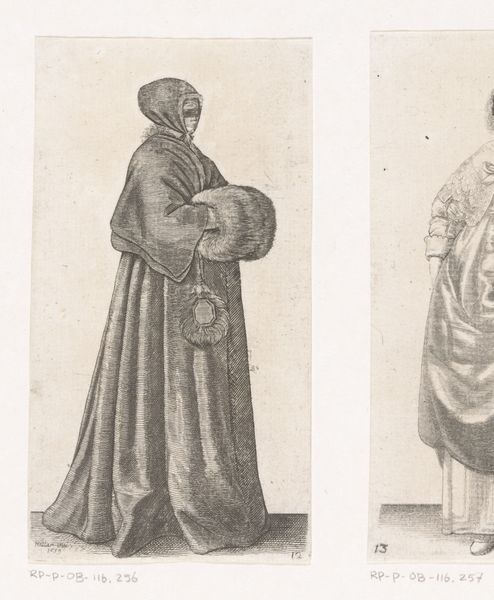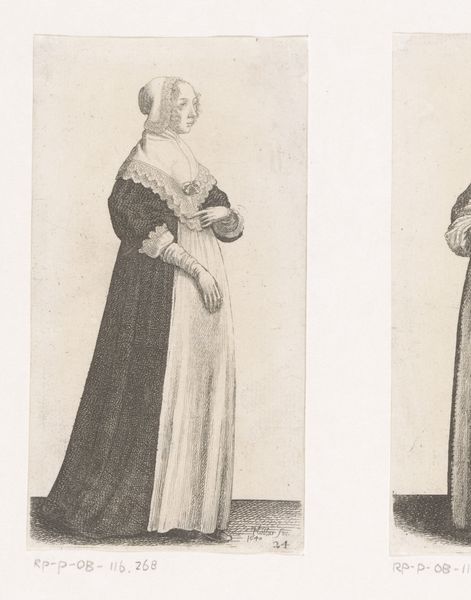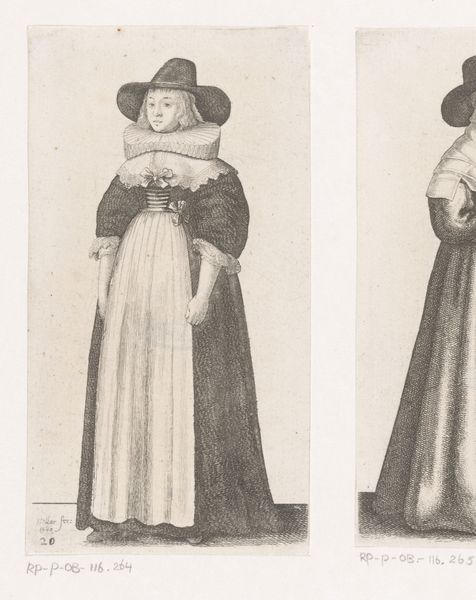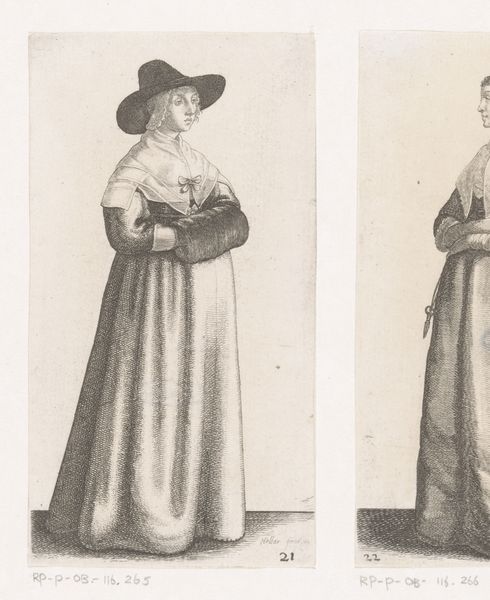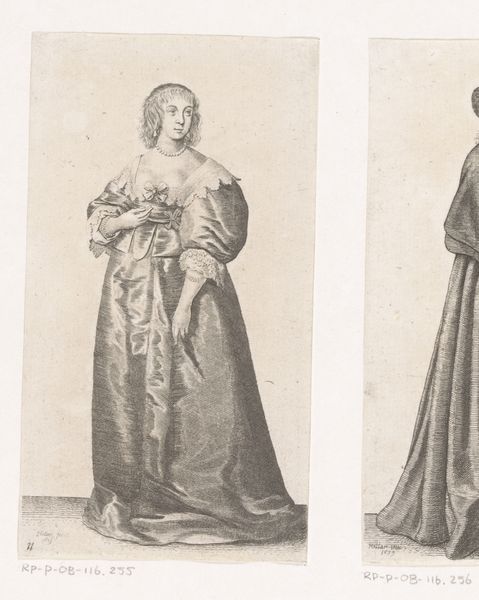
Engelse vrouw van stand met waaier en spiegeltje aan ceintuur 1639 - 1707
0:00
0:00
print, graphite, engraving
#
portrait
#
pencil drawn
#
baroque
# print
#
figuration
#
pencil drawing
#
graphite
#
graphite
#
engraving
Dimensions: height 132 mm, width 70 mm
Copyright: Rijks Museum: Open Domain
Editor: Here we have Wenceslaus Hollar's "Engelse vrouw van stand met waaier en spiegeltje aan ceintuur", dating sometime between 1639 and 1707. It's an engraving. I am immediately drawn to the textures he's created. What’s particularly interesting to you about this piece? Curator: Considering this engraving through a materialist lens, it begs the question: what does the mass production of images, like this one, tell us about the consumption habits and social stratification of the time? The very act of creating and distributing prints makes luxury accessible, transforming it into a commodity. What does that transformation do to our understanding of status and aspiration? Editor: So you’re saying it's not just *what* is depicted, but the very *fact* of the print itself that is revealing? The way it democratized imagery? Curator: Precisely! The materials – the paper, the ink, the metal plate – and the labor involved become crucial to understanding its significance. Hollar, as a craftsman, participates in this emerging market of images. And look at the details of the woman’s attire – each carefully etched line translates luxurious fabrics and accessories into reproducible form. How do you think that impacts perceptions of wealth and class? Editor: It's like… making the elite attainable, but also perhaps devaluing the exclusivity it's trying to represent. Turning identity into something that can be copied, disseminated and purchased. That's a different perspective on portraiture than I usually consider. Curator: Indeed. And let's not forget the social context. This was a time of increasing global trade and burgeoning consumer culture. Prints like these fueled desires and shaped perceptions of what was desirable and fashionable. Are we really so different today? Editor: I hadn't thought about it that way. Thanks, it gives me a lot to consider in my own work. Curator: And for me as well – art's connection to material realities remains a crucial aspect to investigate.
Comments
No comments
Be the first to comment and join the conversation on the ultimate creative platform.
